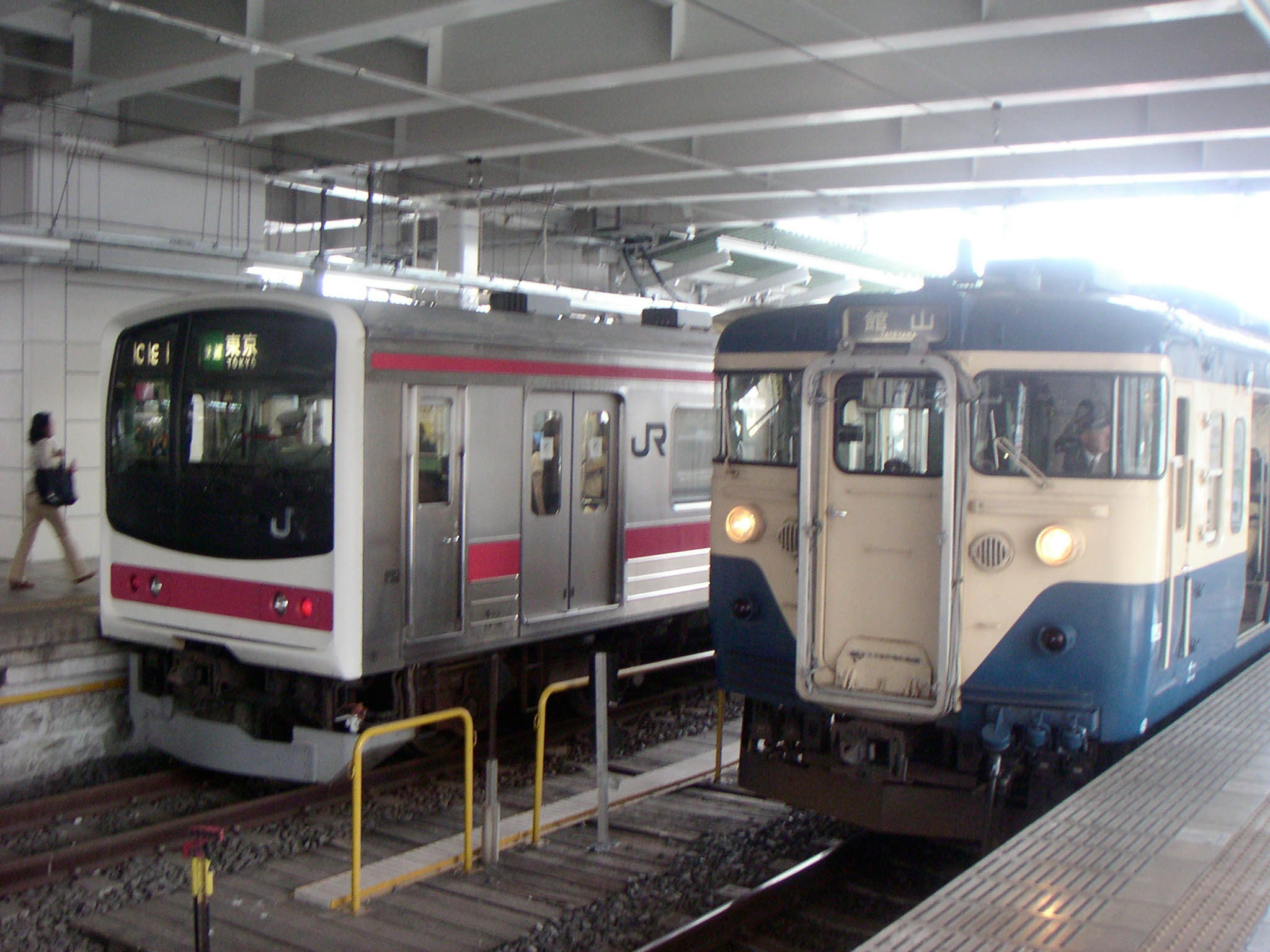- Keiyō Line
Infobox rail line
box_width =
name = Keiyō Line
color = ff0066
logo =
logo_width =

image_width =
caption = Keiyō and Sotobō Line trains at Soga Station
type =Commuter rail
system =
status =
locale =Tokyo -Chiba Prefecture
start = Tokyo
end = Soga
stations =
routes =
ridership =
open = 1975 (passenger service 1986)
close =
owner =JR East
operator =
character =
depot = Narashino
stock =
linelength = 43 km
tracklength =
notrack =
gauge = 1,067 mm
el =Overhead catenary 1,500 V DC
speed =
elevation =
map_state =The nihongo|Keiyō Line|京葉線|Keiyō-sen is a 43 km RailGauge|1067 gauge railway connecting
Tokyo and Chiba,Japan , running mainly along the edge of Tokyo Bay. It is operated by theEast Japan Railway Company (JR East).It is the main rail access to the
Tokyo Disney Resort and theMakuhari Messe exhibition center. The terminus atTokyo Station is located underground, some distance to the south of the main station complex about half way toYūrakuchō Station . This means transfer between other lines at Tokyo Station can take between 15 and 20 minutes.The name Keiyō is derived from the second characters of the names of the cities linked by the line, Tōkyō (東京) and Chiba (千葉). It is occasionally confused with the
Keiō Line , a different railway line in western Tokyo.History
The Keiyō Line was initially planned as a freight-only line. Its first segment opened in 1975 as a link between the Chiba Freight Terminal Station (now the Mihama New Port Resort between Inage-Kaigan and Chiba-Minato Stations) and the
JFE Steel factory nearSoga Station . Passenger service began in 1986 between Nishi-Funabashi and Chiba-Minato, and was extended eastward to Soga and westward to Shin-Kiba in 1988.The final segment of the Keiyō Line, between Tokyo Station and Shin-Kiba, opened in 1990. The platforms at Tokyo Station were originally built to accommodate the
Narita Shinkansen , a planned (but never built) high-speed rail line between Tokyo andNarita International Airport .Planners originally envisioned the Keiyō Line interfacing with the
Rinkai Line at Shin-Kiba, thus providing a through rail connection between Chiba and theTokyo Freight Terminal Station in eastern Shinagawa, and also completing the outer loop for freight trains around Tokyo formed by theMusashino Line . This original plan would also allow through service with theTōkaidō Main Line , allowing freight trains from central and western Japan to reach Chiba and points east.However, in the 1990s, as the artificial island of
Odaiba began developing as a commercial and tourist area in the middle of the Rinkai Line route, the Rinkai Line was re-purposed for use as a passenger line. While there is a through connection between the Rinkai Line and the Keiyō Line, it is only used by passenger trains in charter service, usually carrying groups to theTokyo Disney Resort .ervices
*Keiyō Line local trains stop at all stations between Tokyo and Soga except Nishi-Funabashi.
*Keiyō Line rapid service trains stop at Tokyo, Hatchōbori, Shin-Kiba, Maihama, Shin-Urayasu, Minami-Funabashi, Kaihin-Makuhari and all stops to Soga.
*Musashino Line local trains stop at Nishi-Funabashi, Minami-Funabashi, Shin-Narashino, and Kaihin-Makuhari.
*Musashino Line rapid service trains stop at all stations between Tokyo and Nishi-Funabashi before continuing to the Musashino Line.
*nihongo|Commuter rapid service|通勤快速|tsūkin-kaisoku trains stop at Tokyo, Hatchōbori, Shin-Kiba, and Soga.
*AllLimited Express trains stop at Tokyo (terminus) and Soga, and some of them, at Kaihin-Makuhari. They run through to/from theUchibō Line ("Sazanami ") orSotobō Line ("Wakashio ").tations
Rolling stock
All Keiyō Line rolling stock is based at the Keiyō Rolling Stock Center near
Shin-Narashino Station Rolling stock currently used
*
201 series 10-car EMUs (sky blue livery) (from August 2000)
*205 series 10-car EMUs (magenta stripe) (from March 1990)
*209-500 series 10-car EMUs (magenta stripe) (from October 2008)
*E331 series 14-car EMU (x1) (magenta stripe) (from March 2007)Rolling stock used in the past
*
103 series 10-car EMUs (sky blue livery) (from 1986 until November 2005)
*165 series 3-car EMU (x1) "Shuttle Maihama" (from 1990 until 1995)
Wikimedia Foundation. 2010.
